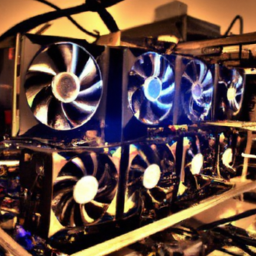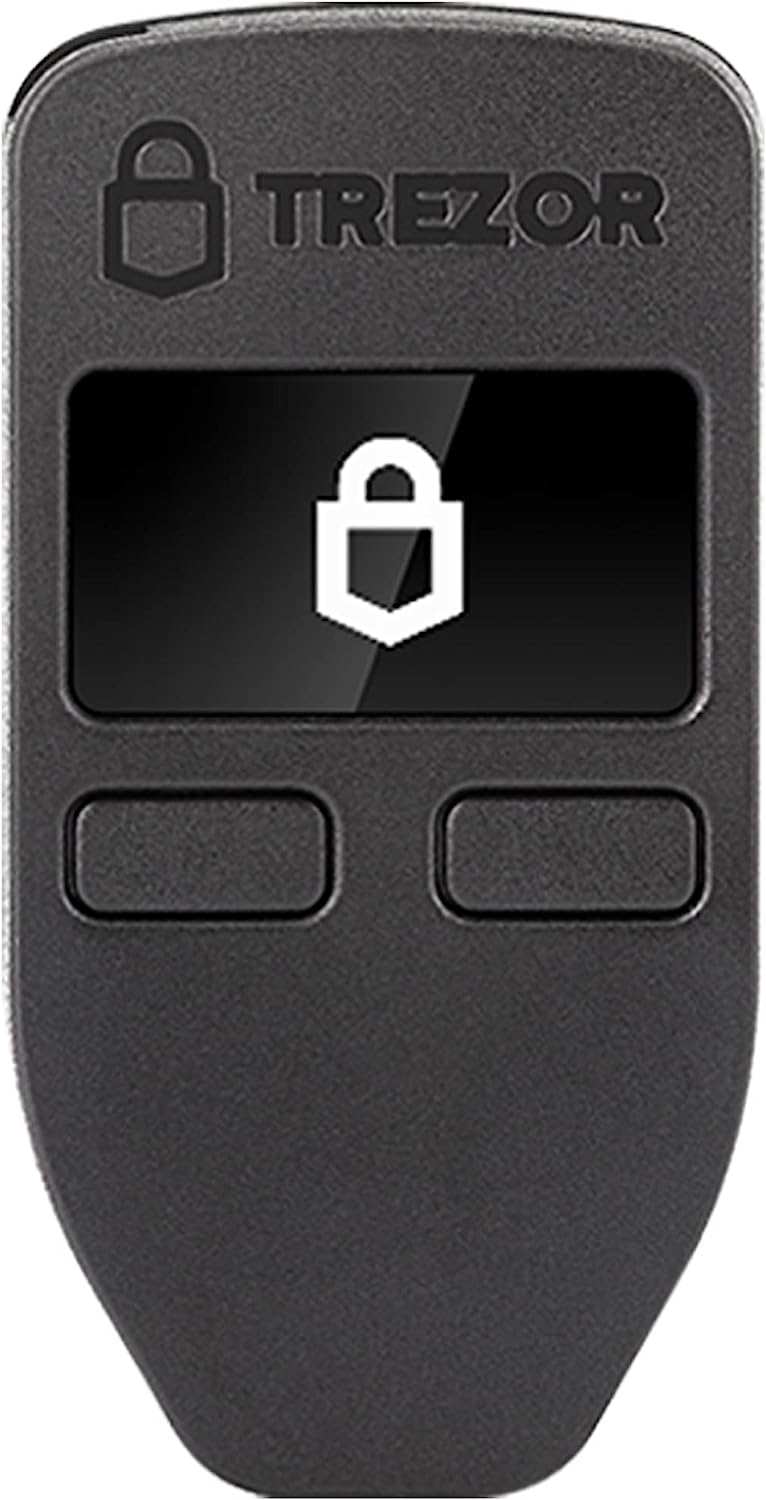Can I Build My Own Cryptocurrency Mining Rig?
Have you ever wondered if you could build your own cryptocurrency mining rig? Well, the answer is a resounding yes! Building your own rig can be a rewarding and cost-effective way to get involved in the world of cryptocurrency mining. In this article, we will discuss the ins and outs of building a mining rig, from the necessary components to the steps you need to take. So, if you are interested in diving into the exciting world of cryptocurrency mining, keep on reading!
building your own cryptocurrency mining rig might seem daunting at first, but with the right information and guidance, it can be a straightforward and enjoyable process. By building your own rig, you have the freedom to choose the components that best suit your needs and budget. Plus, you can gain a deeper understanding of how cryptocurrency mining works. In this article, we will cover everything from choosing the right graphics cards and processors to setting up your rig and maximizing its efficiency. So, if you are ready to take the plunge and start mining your own cryptocurrency, stay tuned for more information in the rest of the article!
What is cryptocurrency mining?
Cryptocurrency mining is the process of validating and adding new transactions to a blockchain, the underlying technology that powers cryptocurrencies like Bitcoin and Ethereum. In other words, it is the process of creating new coins by solving complex mathematical problems using specialized hardware.
Definition of cryptocurrency mining
Cryptocurrency mining involves using powerful computers to solve mathematical problems that validate and secure transactions. Miners are rewarded with new coins for their computational efforts, making mining a crucial aspect of the cryptocurrency ecosystem.
How cryptocurrency mining works
In order to understand how cryptocurrency mining works, it is important to grasp the concept of a blockchain. A blockchain is a decentralized ledger that records all transactions made in a cryptocurrency. Miners verify and encrypt these transactions into blocks, which are then added to the blockchain. To ensure the integrity of the blockchain, miners must compete to solve a complex mathematical problem. The first miner to find the solution is rewarded with newly minted coins.
Advantages of building your own mining rig
While cryptocurrency mining can be carried out using various methods, building your own mining rig offers several advantages.
Cost savings
One of the key advantages of building your own mining rig is cost savings. By purchasing individual components and assembling them yourself, you can often save a significant amount of money compared to buying a pre-built mining rig. Additionally, building your own rig allows you to choose components that offer the best value for money, ensuring that you maximize your mining efficiency.
Flexibility in choosing components
Building your own mining rig gives you the freedom to select the components that best suit your mining needs. You have the flexibility to choose the most powerful or energy-efficient graphics processing units (GPUs) and central processing units (CPUs) based on your specific cryptocurrency mining goals. This level of customization can result in higher mining performance and profitability.
Enhanced control and customization
With a self-built mining rig, you have complete control over its operation and can customize it to fit your personal preferences. You can fine-tune the rig’s power consumption, temperature management, and noise levels. This level of control allows you to optimize your mining rig’s performance, enhancing your chances of profitability.
Components required for building a mining rig
Building a mining rig requires several key components that work together to create a powerful and efficient machine. Here are the essential components you will need:
Graphics Processing Units (GPUs)
GPUs are the essential workhorses of a mining rig. They are responsible for performing complex calculations required for cryptocurrency mining. It is recommended to choose high-performance GPUs specifically designed for mining, such as those from Nvidia or AMD.
Central Processing Units (CPUs)
While GPUs are the primary computational powerhouses in a mining rig, CPUs handle tasks that are not as GPU-intensive. A high-performance CPU can improve overall system stability and assist in managing mining operations efficiently.
Motherboard
The motherboard acts as the central hub that connects all of the mining rig’s components. When choosing a motherboard, ensure it has enough PCI-E slots to accommodate the number of GPUs you plan to use. Additionally, consider factors such as power delivery and compatibility with your chosen CPUs and GPUs.
Power Supply Unit (PSU)
A reliable and efficient PSU is crucial for a mining rig. Since GPUs and CPUs consume a significant amount of power, it is important to choose a PSU with adequate wattage and efficiency to power all components. Consider factors such as modular cabling for easy cable management and multiple power connectors for GPUs.
Memory (RAM)
Although mining does not require a large amount of RAM, it is essential to have sufficient memory to ensure smooth operation. Opt for a minimum of 8GB of RAM to avoid any performance issues.
Storage (SSD/HDD)
While not directly related to mining performance, having storage is necessary for installing the operating system, drivers, and mining software. Both solid-state drives (SSDs) and hard disk drives (HDDs) are suitable for this purpose, with SSDs offering faster boot times and data access.
Cooling system
Mining rigs generate a significant amount of heat, so a proper cooling system is essential to prevent overheating and maintain optimal performance. Consider using a combination of fans, heatsinks, and liquid cooling solutions to keep temperatures in check.
Riser cables
Riser cables are used to connect the GPUs to the motherboard. They allow for more efficient placement of GPUs within the mining rig and help maximize airflow for improved cooling.
Casing
Although not a crucial component, a mining rig casing can provide additional protection and organization for your components. Choose a case that accommodates your motherboard and GPUs and provides adequate ventilation for cooling.
Step-by-step guide to building a mining rig
Now that you understand the components required, let’s discuss the step-by-step process of building your own mining rig:
Choosing the right components
Research and select the best components for your mining rig based on your budget, mining goals, and energy efficiency requirements. Consider factors such as GPU performance, power consumption, and compatibility.
Assembling the rig
Carefully install the components into the motherboard, ensuring everything is firmly secured and properly connected. Take note of the installation order to avoid any unnecessary complications. Pay close attention to inserting the GPUs and riser cables correctly.
Installing operating system and drivers
Once the hardware is assembled, install your preferred operating system, such as Windows or Linux. Make sure to install the necessary drivers for your GPUs to ensure optimal mining performance.
Configuring mining software
Choose a mining software that is compatible with your chosen cryptocurrency and configure it accordingly. Enter your mining pool details, create a wallet address, and tweak settings to optimize performance.
Joining a mining pool
Consider joining a mining pool to increase your chances of earning consistent rewards. Mining pools allow miners to combine their resources and share the profits generated. Choose a reputable mining pool with a good track record and low fees.
Monitoring and optimizing performance
Regularly monitor your mining rig’s performance, including hash rates, temperatures, and power consumption. Adjust your configurations as necessary to maximize efficiency and profitability. Consider using monitoring software or online dashboards for easy access to real-time data.
Considerations and challenges
While building your own mining rig offers several advantages, it is important to be aware of certain considerations and challenges:
Electricity costs and energy efficiency
Mining rigs consume a significant amount of electricity, so it is crucial to consider the associated costs. Research your local electricity rates and calculate the power consumption of your rig to estimate profitability. Opt for energy-efficient components to minimize electricity costs.
Temperature management
Mining rigs generate a substantial amount of heat, which can affect stability and longevity. Ensure that your cooling system is adequate to maintain optimal operating temperatures. Consider the physical location of your rig to optimize airflow and minimize heat buildup.
Mining profitability and return on investment
Due to market fluctuations and increasing competition, mining profitability can vary significantly. Conduct thorough research and calculate the potential return on investment (ROI) before investing in a mining rig. Consider factors such as electricity costs, hardware expenses, and future market conditions.
Technical knowledge and troubleshooting
Building and maintaining a mining rig requires technical knowledge and troubleshooting skills. Be prepared to handle software and hardware issues that may arise, such as driver conflicts, connectivity problems, or system crashes. Stay updated with the latest developments in the cryptocurrency and mining industries to overcome potential challenges.
Market volatility and risks
The cryptocurrency market is highly volatile, and mining profitability can be affected by market conditions. Prices of cryptocurrencies can fluctuate dramatically, resulting in unpredictable mining rewards. Be prepared to adapt to changing market dynamics and manage the associated risks.
Alternatives to building your own mining rig
If building your own mining rig seems too complex or time-consuming, there are alternative options available:
Cloud mining services
Cloud mining allows you to rent mining resources from a third-party provider. These services typically require a fee or a share of your mining rewards, but they eliminate the need for hardware setup and maintenance. However, be cautious when choosing a cloud mining service, as there have been instances of scams and Ponzi schemes in the past.
Purchasing pre-built mining rigs
If you prefer a hassle-free option, you can purchase pre-built mining rigs from reputable manufacturers. These rigs come fully assembled and configured, saving you time and effort. However, they usually come with a higher price tag compared to building your own.
Security measures for mining rigs
Securing your mining rig is crucial to protect your investment and assets. Implement the following security measures to safeguard your rig:
Implementing strong passwords
Use strong, unique passwords for your mining rig’s login credentials. Avoid using default or easily guessable passwords to prevent unauthorized access.
Using two-factor authentication
Enable two-factor authentication (2FA) whenever possible to add an extra layer of security. 2FA requires an additional verification code, typically sent to your mobile device, to access your mining rig.
Regularly updating software and firmware
Stay updated with the latest software and firmware updates for your mining rig components. This ensures you have the latest security patches and bug fixes, protecting your rig against potential vulnerabilities.
Securing the physical location of the rig
If possible, keep your mining rig in a secure location to prevent physical theft. Consider using locks or surveillance cameras to deter potential thieves. Additionally, ensure that the location has proper ventilation and remains free from moisture and dust.
Maintenance and upgrading of mining rigs
Proper maintenance and upgrading are essential to ensure the longevity and efficiency of your mining rig.
Cleaning and dust management
Regularly clean your mining rig to prevent dust buildup, which can hinder cooling performance. Use compressed air or gentle brushes to remove dust from fans, heatsinks, and other components.
Replacing faulty components
Over time, components may fail or become outdated. Promptly replace any faulty or outdated components to maintain optimal performance and prevent system instability.
Upgrading hardware for improved performance
If the mining landscape changes or your mining goals evolve, consider upgrading your hardware to stay competitive. Upgrading GPUs, CPUs, or adding more memory can improve mining performance and potentially increase profitability.
Legal and regulatory considerations
Before embarking on cryptocurrency mining, it is important to consider the legal and regulatory landscape in your jurisdiction.
Licensing and permits
Some jurisdictions may require specific licenses or permits to operate a mining rig. Research and comply with any legal obligations, taking into account any potential fees or taxation associated with mining activities.
Taxation of mining income
In many countries, mining income is subject to taxation. Be aware of your tax obligations and consult with a tax professional to ensure compliance with applicable tax laws.
Compliance with local regulations
Different countries have varying levels of regulation regarding cryptocurrency mining. Stay informed about any legal restrictions or regulations in your jurisdiction to avoid any potential legal issues or penalties.
Conclusion
Building your own cryptocurrency mining rig offers numerous advantages in terms of cost savings, flexibility, and control. By carefully selecting and assembling the right components, you can create a powerful and efficient mining rig tailored to your specific needs. While there are considerations and challenges, such as electricity costs and market volatility, building your own rig can be a rewarding endeavor for those willing to invest time and effort. Take into account alternative options like cloud mining or pre-built rigs, but always prioritize security, maintenance, and legal compliance. With proper research and planning, you can make an informed decision about whether building your own cryptocurrency mining rig is the right choice for you.







